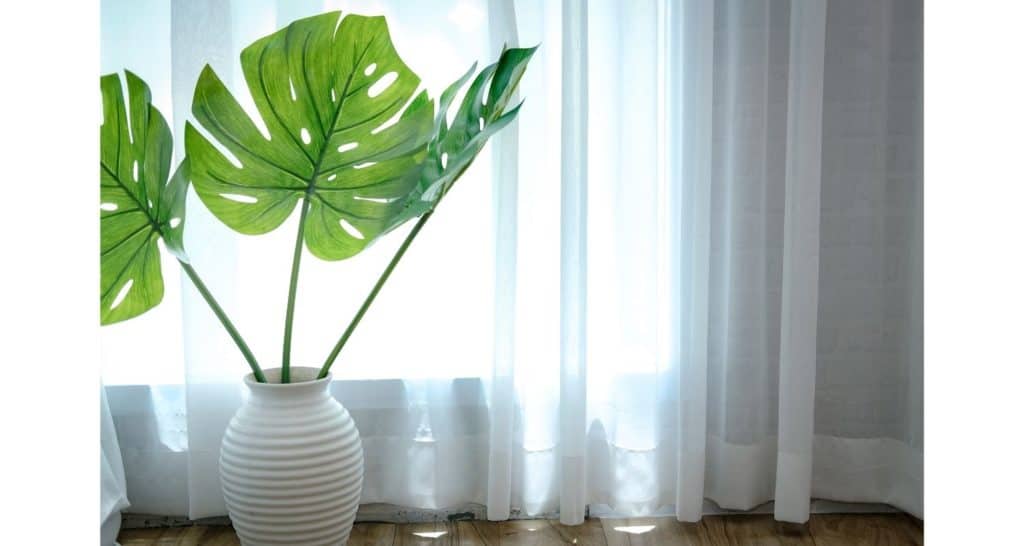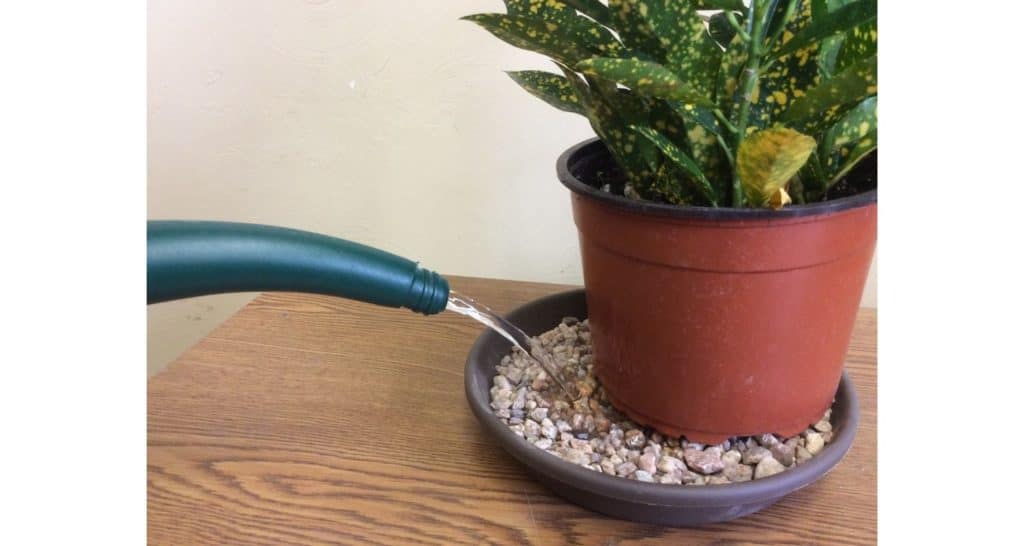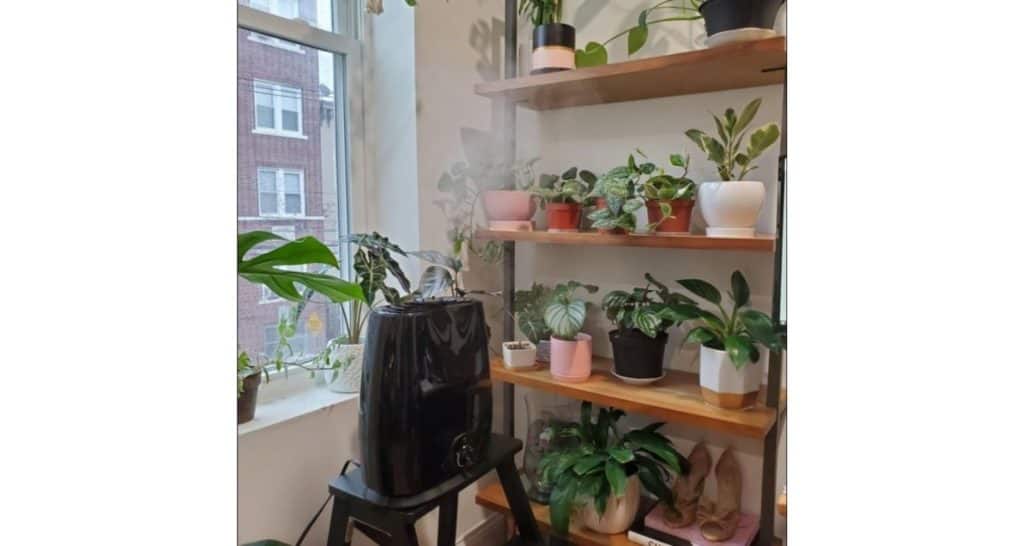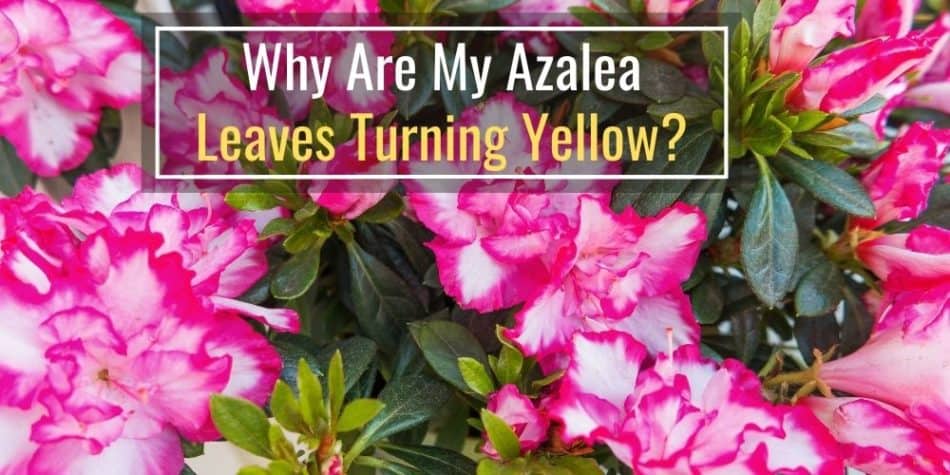Azaleas belong to the genus Rhododendron. They are so popular with gardening enthusiasts that there are over 10,000 cultivars of this flowering evergreen.
Although beautiful, Azaleas are highly toxic, and at one point in time if someone was to receive a bouquet of their flowers in a black vase it was equivalent to a death threat.
Though Azaleas are known to live for hundreds of years (outside, of course), there are a number of issues that can affect their health and longevity.
Putting the spotlight on indoor Azaleas, we are here to help you find the answer to the following question:
Why are my Azalea leaves turning yellow?
The most common reasons for Azalea leaves to turn yellow are underwatering, overwatering, improper light, iron deficiency, overfertilization or pests.
Presuming you are a proficient gardener and are familiar with taking care of plants – then usually the primary culprit for yellowing leaves on Azaleas are an iron deficiency or pH imbalance.
Iron Deficiency and pH Imbalance
You are likely well-aware that iron deficiency can lead to many health issues in people, but plants also suffer from it too.
Azaleas are a plant that requires acidic soil, not alkaline.
Azalea leaves will turn yellow from iron deficiency which is associated with low quality soil.
Simply add a soil amendment or fertilizer to the existing soil or repot the Azalea into a pot with fresh potting soil. There are special fertilizers for Azaleas which will help maintain pH balance as well as special potting soil that is meant for acid-loving plants.
If you prefer to make your own potting soil then you can include things such as pine needles, peat moss, garden compost, and leaf mold. Make sure to include some rocks, pebbles, or pumice into your potting soil to encourage proper drainage.
Lighting Requirements For Azaleas
If your Azalea is looking a little shady—pun intended—the first thing to do is reevaluate the plant’s location.
Azaleas need light but they prefer bright indirect sunlight as opposed to direct light.
If Azaleas receive too much direct sunlight then their leaves will start to turn a yellowish shade before turning brown and dropping off.
So place an indoor Azalea in a bright room but not directly in windowsill that receives a lot of sunlight.
Providing Bright Indirect Sunlight For Azaleas
The best way to provide bright indirect sunlight to a houseplant is to simply place the plant near a window but not directly in the windowsill.
If you place your Azalea in an area and it only receives 2-3 hours of direct sunlight then that location is probably fine. The rest of the day the plant should still receiving bright light but the plant itself should not be illuminated by bright yellow sunlight.
However, there are other options if you do want to place your plant closer to the window so that it improves your room’s decor.
Hang A Sheer Curtain To Turn Direct Sunlight Into Bright Indirect Light
If the direct sunlight is too intense or is harming the plants then you can hang a sheer curtain to dim the lights. Sheer curtains are transparent curtains that allow in a fair amount of light while blocking direct sunlight.

Most indoor houseplants thrive in indirect sunlight so this is a great option if you want to place other types of plants near the sunny south facing window.
Not to mention sheer curtains add a bit of privacy. Sheer curtains can be found on amazon in all colors and sizes.
Best Outdoor Locations For Azaleas
In the summertime feel free to place your Azalea outside in a nice, shady spot.
You can leave Azaleas out well into fall, as long as you bring it in before the frosts arrive. At this point, the azalea should be about to flower, if it’s not already showing buds.
When caring for an outdoor Azalea, try to place your shrub somewhere it will receive dappled morning sun, avoiding the hot sunlight of the afternoon.
How Much Water Does An Indoor Azalea Need?
Azaleas need enough water so that the soil remains moist and does not completely dry out.
Most houseplants are tropical plants so they all prefer moist but not wet or completely dry soil.
Here’s the best way to determine when to water an indoor Azalea.
When To Water An Azalea
Follow these steps in order to determine when to water an Azalea:
- Insert your index finger into the soil 1 to 2 inches deep
- Feel for moisture
- Water if the soil is dry
- Do not water if the soil is wet or moist
In hot and dry climates, you may have to water your Azalea 2-3 times a week.
In cooler climates, or during the winter, watering your Azalea once a week is usually sufficient.
Common signs that your plant is not getting enough water include curling leaves and wilting flowers.
Underwatering
The most common reason for curling and yellowing leaves on an Azalea is from underwatering.
This is a beginner mistake we all make at some point in our gardening careers where we simply forget to water the plant. Before you know it, the leaves will start curling and turning yellow before falling off.
A tell tale sign of underwatering is dry soil with yellowing and drooping leaves.
When the plant is not watered enough, the Azalea is also not absorbing the nutrients it needs to flourish and flower.
Azaleas Prefer Moist But Not Wet Soil
Azaleas prefer to have moist soil so its best to not let the soil completely dry out for multiple days.
The best way to know when to water an Azalea is to feel the soil for moisture using your finger.
When To Water An Azalea
Follow these steps in order to determine when to water an Azalea:
- Insert your index finger into the soil 1 to 2 inches deep
- Feel for moisture
- Water if the soil is dry
- Do not water if the soil is wet or moist
Overwatering
The next most common cause of yellowing leaves on an Azalea is overwatering the plant.
This is another beginner mistake that we all make since we want to make sure our plants have everything they need but overwatering will cause issues for your plants just like underwatering will.
In order to make sure that your Azalea stays healthy and fresh, it is imperative that you water it properly.
Overwatering or underwatering can cause the leaves of this plant to curl and turn yellow. However, overwatering not only causes the Azalea leaves to curl and turn yellow but can also lead to root-rot.
Overwatering can be caused by a few issues such as watering too frequently, poor draining soil, or pots that do not have any drainage holes.
If there is not a way for excess water to drain out of the potted plant then the water will get stuck in the soil causing the roots to rot and the leaves to curl.
How To Solve Overwatering Issues
If your Azalea is wilting or the leaves are turning yellowish and are curling along with wet soil then the plant is being overwatered.
The easiest way to fix this problem is to stop watering the plant as often by skipping a watering.
However, if you are watering the plant’s soil less often and the plant is still suffering from overwatering then take the following steps:
- First remove your potted plant from the wet soil
- Check the plant’s roots for any signs of root rot and remove any areas that are rotted
- Ensure that the pot has a drainage hole at the bottom
- Repot the plant using fresh dry soil that is intended for potted plants
- Potting soil usually contains perlite, pumice, peat moss, and bark to allow for proper drainage.
Overfertilizing
Fertilizing your Azalea regularly is a helpful way to encourage plant and flower development.
However, too much of a good thing can be a bad thing and fertilizer is no different. Overfertilizing an Azalea can cause issues for the plant and the earliest sign of stress from overfertilizing is curling and yellowing leaves.
Azaleas should not be fertilized more than once every 3 to 4 weeks otherwise the plant’s leaves will start to curl and turn yellow.
How To Solve Overfertilization Issues
To solve overfeeding issues, you must first determine if the plant is overfed or not.
The signs of over-fertilization or feeding include curled leaves, discoloration, less flowers, excessive foliage, and excess fertilizer visible on the soil.
Follow these steps to fix overfertilization issues:
- Take out the excess fertilizer that is visible above the soil.
- Leach the soil with water by pouring lots of water in the soil and letting it drain out.
- Leaching the soil will flush the excess fertilizer away from the roots of the plant.
- If possible, repot the plant and do not fertilize the plant for at least 2 months.
Pests and Disease
If the air inside your house is dry then your azalea may attract spider mites.
Spider mites are tiny white or red arachnids that suck the sap from the leaves of the plant. You may see the mites themselves, or you may see signs of their webbing on the underside of your azalea’s leaves.
If left untreated, these pests can cause a lot of damage to the plants.
From curling leaves to stunting the plant’s growth – pests are something that you want to get rid of as quickly as possible.
How To Get Rid Of Pest Infestations
There are three methods which you can use to remove the pest infestation from your Azaleas:
- Dispose Infected Plants: The less risky way to get rid of any pest infestation is to throw out those plants that have been infected. Most pests reproduce very fast and they can spread to other nearby plants which can make the infestation even worse.
- Heat treatment: The other method to fix the pest infestation issue is by using the heat treatment method. Most pests cannot survive in temperatures greater than 110°F. This method is tricky since you do not want to expose your plant to these hot temperatures for a long time either as this can damage your plant.
- Insecticides and pesticides: Neem oil is a biopesticide and works perfectly for mites and aphids. This is a good option if you want to use an organic method. You can also try ‘Imidacloropid’, an insecticide which is very effective in killing such insects.
Personally I recommend creating your own homemade insecticide spray by using castile soap and water since this is safe to spray around kids and pets.
Homemade Insecticide Soapy Spray
I use a homemade insecticide spray made of castile soap and water to get rid of any pest infestations. I need my indoor insecticide to be safe around kids and pets so I personally use this spray in my own home.
View this guide to learn how to make homemade soapy spray that is safe to spray on plants.
Fungus and Root Rot
Azaleas are prone to fungus, so unlike other plants, it’s best not to mist them.
If your Azalea has brown leaves then its possible the plant may be suffering from fungus or root rot.
To ensure your plant is getting enough humidity it’s best to use a pebble tray or humidifier in the room.
Let’s quickly go over the pros and cons of a pebble tray and humidifier.
Simple DIY Humidifier: Pebble Tray
Pebble trays are a simple and effective solution to providing more humidity to plants.
A pebble tray is exactly what it sounds like—a tray of pebbles put under the potted plant that will catch the water that drains out. It helps to keep water away from the roots—preventing rot—and as the water evaporates it adds moisture into the air surrounding the plant.
Most house plants, including Azaleas, are tropical plants that can grow better in a humid environment.

In order to make a pebble tray:
- Select a shallow tray that is larger than the base of the plant’s pot
- Fill the tray with a single layer of pebbles
- Add water so it rises to about halfway up the rocks
That’s it! You have now created a simple but effective pebble tray for increasing humidity.
Next just place your plant on top of the pebbles and add water to your tray if it ever dries out.
Humidifier: Easy Way To Increase Room’s Humidity
One simple solution is to periodically mist your indoor houseplants to increase the humidity. However, this is manual and, personally, I’m too lazy to continually spray my plants every so often.
An easier solution is to place a humidifier in the room with all of your tropical plants. A humidifier will allow you to adjust the settings to provide the right amount of humidity year round.

I use this humidifier in my room and the water reservoir lasts for about 2 days before needing to be refilled. I highly recommend it for a low maintenance way of keeping the room humid for your houseplants.
How Do I Make My Azalea Bloom Longer?
Your azalea should bloom in March or April, with the cooler winter temperatures encouraging buds to appear.
Ideally, you should try to keep an indoor Azalea in a room that is kept around 55°F to 60°F in the winter months and around 70°F in the summer.
Always make sure the Azalea’s soil is kept moist, as mentioned above, but never soggy.
Also, don’t fertilize Azaleas during the growing period as this can cause the plant to simply grow larger instead of blossom.
Final Thoughts
Azaleas aren’t the easiest indoor plans to care for, but their beauty can make all your hard work worth the effort!
If your azalea is developing a yellow color on its leaves then the first thing to do is ensure it has the proper nutrients it needs through soil and fertilizer.
Additionally, make sure that the plant is being water properly so the soil is moist but not wet or completely dry. And verify that the Azalea is receiving bright indirect sunlight and is not overrun with pests.
If you are looking to grow an Azalea indoors then the Indica Azalea may be the best option as it is able to cope with the warmer indoor temperatures of winter.
Azaleas are toxic to humans, cats, dogs, and livestock such as horses.
Treat your azalea with a healthy amount of respect and care and it will reward you with a gorgeous array of blooms!

